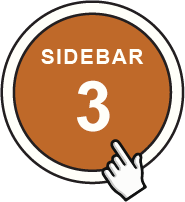Show Navigation Menu
Section Two : Becoming a Researcher/Scholar
Introduction | Comparing Ordinary and Scientific Inquiry | Scientific Reasoning |
Framework of Scientific Research | Conclusion | References
Chapter 5: The Nature of Inquiry, Sidebar 3
Hide Navigation Menu
Home Page
Section 1 Foundations of Doctoral Study / Chapter 5 The Nature of Inquiry
Choosing a Method
Given the paradigms, traditions, and techniques offered in this chapter, which method is best suited for a dissertation? Three primary activities ultimately will answer the question of method for a dissertation candidate. These activities include receiving guidance from a dissertation committee; completing a literature review, which helps to identify the gap or tension in the literature on the research topic of interest and form relevant research questions; and the candidate's reflection and willingness to be creative in choosing a method. This last activity is vitally important for research relevancy, because choosing a method does not necessarily mean choosing ready-made tools.
Even experienced researchers sometimes disagree on appropriate methods of inquiry for different kinds of phenomena. In addition, many researchers never venture beyond their chosen method for inquiry, choosing rather to reuse the same ready-made tools for inquiry; and there is nothing wrong with this approach. This is the advice often given by dissertation committees, but for the prepared doctoral candidate, the existence of ready-made tools for inquiry should present the idea that there might be designs waiting to be discovered.
Take, for example, mixed method. This method of inquiry may seem like a solution to the shortcoming inherent in the quantitative and qualitative traditions presented in this chapter. But are established mixed-method designs the only way to connect the traditions? This is where the candidate's reflection and willingness to be creative becomes important. The intersection of the predominant methods for inquiry present opportunities for creative ways of inquiring (Tacq, 2011). Should techniques for asserting causality and using an experimental method design only be utilized by quantitative researchers? What would an experimental method look like for a qualitative researcher, or equally important, how could a qualitative researcher establish causality in a local setting and transfer this established relationship to other populations? Conversely, which qualitative tools could be used to support generalizing quantitative results to the larger population? Would these innovations follow an established mixed-method design or become a new design?
If a researcher is to transcend or get behind the barriers that mark the differences between each research tradition, a researcher needs to explore and come to appreciate all research methods in use. The transformation may result in new ways of employing old tools, or the creation of new tools, but it may also mark the transition of the researcher from logical inquirer, to innovator, and, finally, teacher of methods to future doctoral learners. Earning a doctoral degree offers all of these possibilities. Through reflection, guidance from mentors, and exploring previously used tools, the appropriate method for inquiry will become clear.

